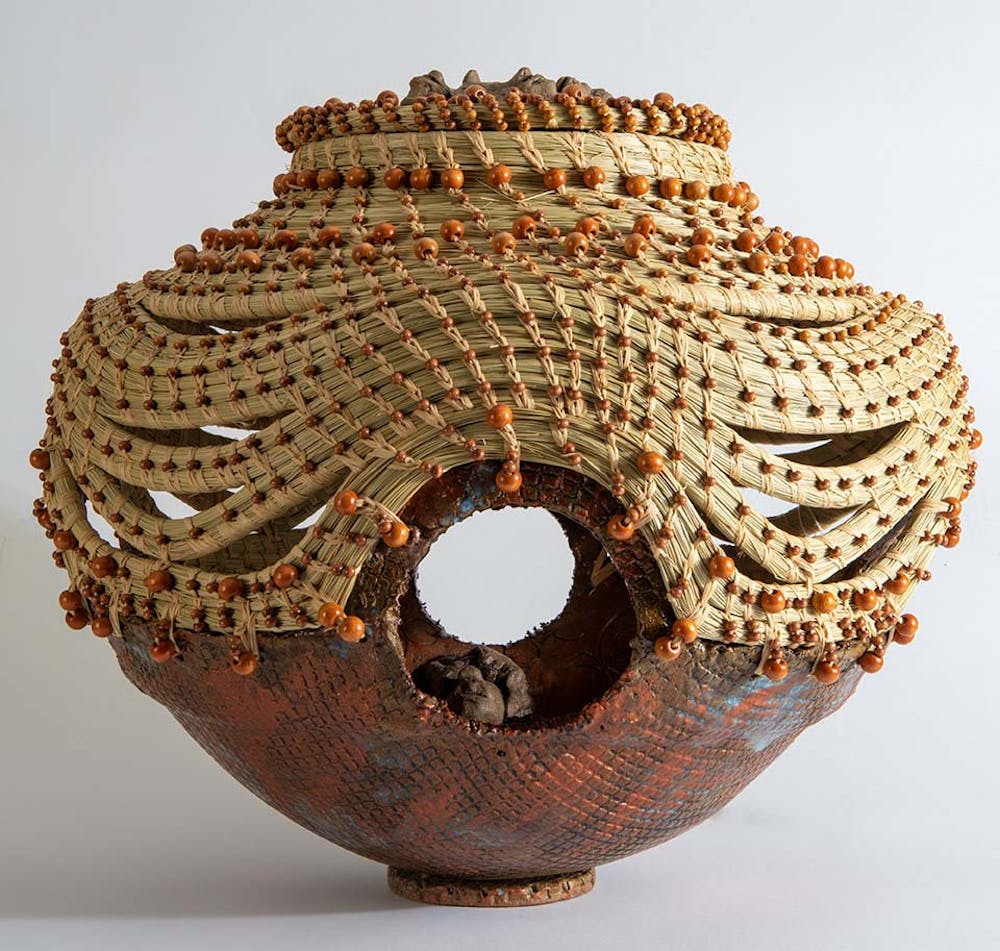Darryl Stoneworth, a New York native, never expected to spend his life creating a form of historic South Carolina art — one that embodies South Carolina's painful history with slavery but also promotes a culture older than the country itself.
But today, Stoneworth and his wife's, Angela Stoneworth, work is on display as a featured artist in the McKissick Museum’s newest exhibit, Sewn Through Time.
The exhibit is a collection of sweetgrass baskets that are making their way out of storage after over 40 years. The exhibit explores the history of the Gullah Geechee basket weaving tradition — an inseparable part of South Carolina history.
The term "Gullah Geechee" describes the culture and people that descended from those enslaved on the coasts of South Carolina, North Carolina, Georgia and Florida. Originating in West Africa, the basket weaving tradition traveled with enslaved African Americans as they made baskets for their enslavers for rice harvesting, while freed African Americans sold them to plantation owners for a profit.
Outside of the exhibit, the Stoneworths sell their weaved art in Charleston. When the Stoneworth's married, Angela taught Darryl the art form after learning it from her grandmother. Today, they create to sell and promote their work, but also work to uphold the Gullah Geechee belief in cultural longevity, teaching their children the art of weaving to keep the tradition alive.
“We simply want to elevate the culture and elevate the minds of the people that have been looking at sweetgrass baskets for years,” Darryl Stoneworth said.
The exhibit displays how it has evolved into modern art, showing both traditional and modern pieces alongside each other.
“I’m hoping that when I’m long gone, that one of my grandchildren or great-grandchildren, that there will be a legacy,” Angela Stoneworth said. “That they can look back on us and say, ‘You know, I was proud of my grandmother, my great grandmother that this is what she did,' and it just makes me proud,”

The exhibit includes sweetgrass works from all different time periods, including the original fanner baskets used to harvest rice on plantations. It shows the progression of the art from simple works to intricate pieces like cups weaved tight enough to hold liquid and a chair strong enough for sitting.
In 1988, Dale Rosengarten, the Special Collections Curator at the College of Charleston, worked with the McKissick Museum to create an exhibit that could be a physical representation of her book “Row Upon Row” which explores this Gullah Geechee work.
Sewn Through Time honors the fourth edition of “Row Upon Row” which explores how the tradition of basketmaking has changed over time from functional baskets to a fine art form.
Rosengarten chose Kennedy Bennet, a Yale University graduate who comes from a family of basket weavers and wrote her undergraduate thesis on the sweetgrass tradition, to curate the exhibit.
Bennett worked from Yale to condense her research on the tradition while Lana Burgess, the graduate director of McKissick's museum management program, worked in the museum to put the exhibit together.
For those who had the skill, it was a way to potentially lessen the time spent working in the fields, as they could spend their days weaving instead of harvesting.
During The Great Depression, basket weavers began selling their work at stands off Highway 17 between Charleston and Mount Pleasant. Baskets are still sold there today by artists like the Stoneworths, remaining an iconic part of the culture of the area.
For those involved in curating the exhibit, it is important to highlight contemporary artists within the culture that put so much effort into their artistry.
"I think, like anything else, it's a true calling and it's a visual expression of their identity," Burgess said. "So for me, that's what defines it as art."
Burgess said its important to celebrate the contemporary practice of the art form, as it has shifted from more than baskets to sculptures and pieces that focus on curvature, challenging tension in materials till they nearly break. In displaying their work, the museum hopes to give artists exposure to add to their resumes so that art dealers will consider representing them.
“It’s important to acknowledge and recognize the new makers in that tradition and those that have made exceptional forms that blur the lines between art and material culture,” Burgess said.
The exhibit will be at McKissick Museum until Dec. 10.

